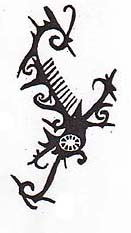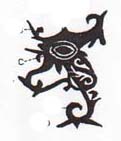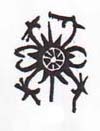Lipan Katip: Difference between revisions
Jump to navigation
Jump to search
(Created page with "<html><div class="mw-content-ltr" dir="ltr" id="mw-content-text" lang="en"><p>The <b>Kenyah</b> are one of the many tribes of <a href="/index.php?title=Borneo" title="Borneo">Borneo</a> that had a strong tattoo tradition. Unfortunately, we only have a few examples of it from the <a href="/index.php?title=Sarawak_Museum" title="Sarawak Museum">Sarawak Museum</a>. </p> <table style="text-align: center;"> <tr> <td><div class="thumb tright"><div class="thumbinner" style="wid...") |
(Page conversion via llm-mediawiki-rev -jwm) |
||
| Line 1: | Line 1: | ||
The '''Kenyah''' are one of the many tribes of [[Borneo]] that had a strong tattoo tradition. Unfortunately, we only have a few examples of it from the [[Sarawak Museum]]. | |||
{| class="wikitable" style="text-align: center;" | |||
|- | |||
|[[File:Urang.jpg|thumb|right|'''Urang''', also known as the "prawn pattern" is a modification of the [[Dog design]].]] | |||
|[[File:Toyu.jpg|thumb|right|'''Toyu''' is a crab design. From a tatu block in the [[Sarawak Museum]] (No. 1054-71)]] | |||
|[[File:LipanKatip.jpg|thumb|right|The '''lipan katip''' is a design of the claws of a centipede, and is intended for the breast or shoulder of a man. From a tatu block in the [[Sarawak Museum]]. (No. 1054-20)]] | |||
|} | |||
==Related Articles== | |||
*[[Kowit]] | |||
*[[Borneo]] | |||
*[[Lasat Mata]] | |||
*[[Borneo Rose]] | |||
Latest revision as of 07:13, 17 September 2023
The Kenyah are one of the many tribes of Borneo that had a strong tattoo tradition. Unfortunately, we only have a few examples of it from the Sarawak Museum.
 Urang, also known as the "prawn pattern" is a modification of the Dog design. |
 Toyu is a crab design. From a tatu block in the Sarawak Museum (No. 1054-71) |
 The lipan katip is a design of the claws of a centipede, and is intended for the breast or shoulder of a man. From a tatu block in the Sarawak Museum. (No. 1054-20) |